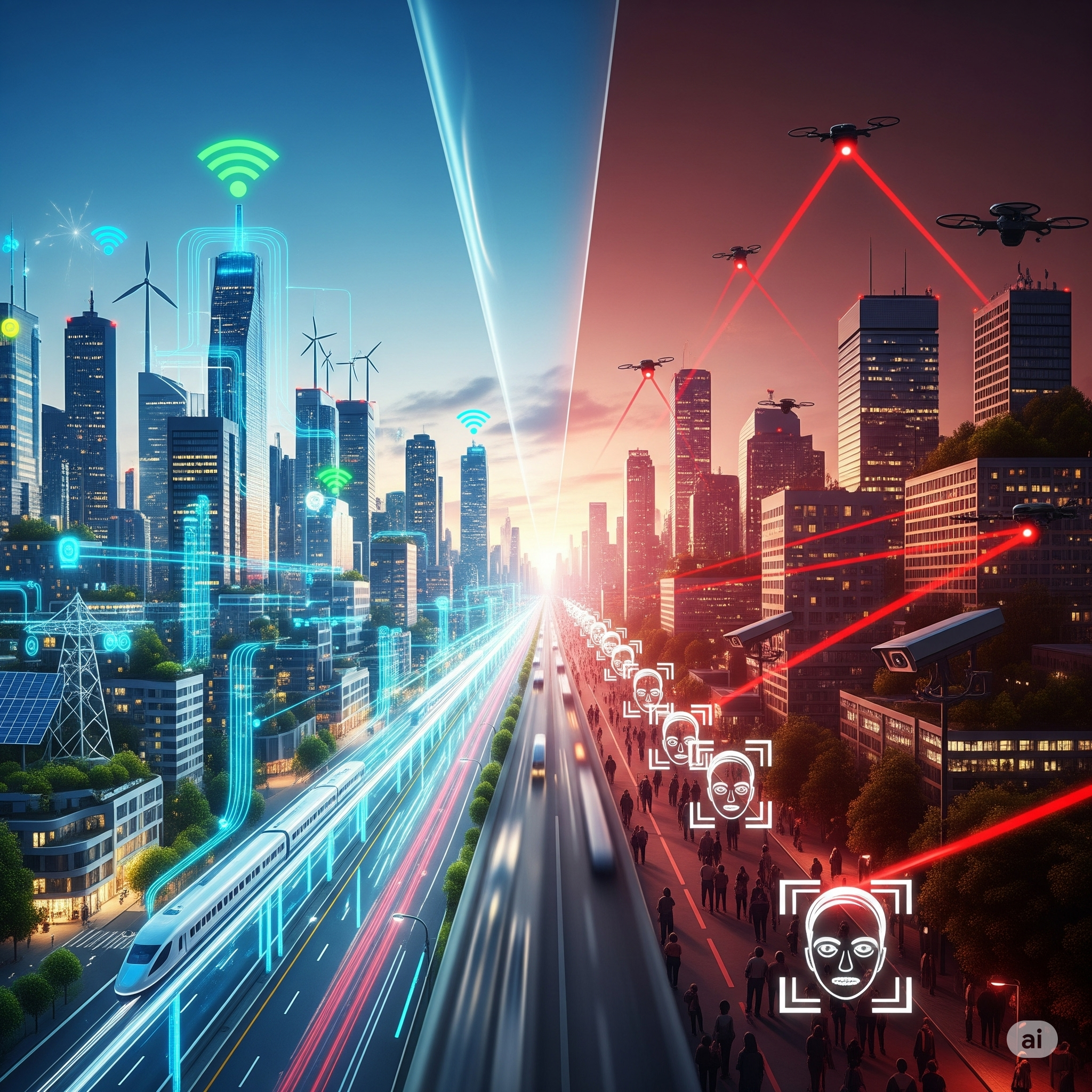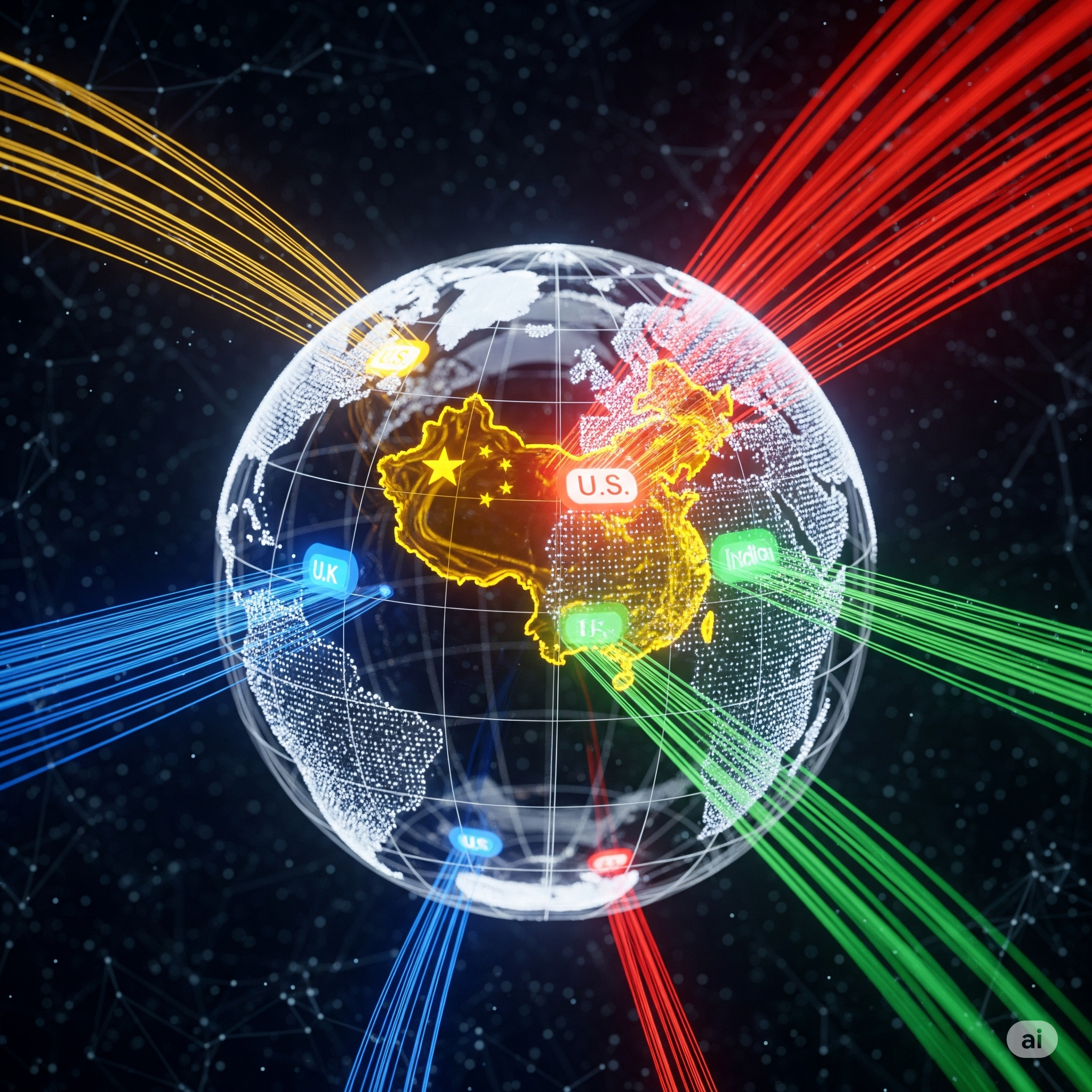The role of artificial intelligence in government is rapidly expanding, promising a future of streamlined public services and optimized urban living. This vision of a smarter city is becoming a reality, with AI systems managing everything from traffic flow to energy grids. However, this same technology is also a powerful tool for surveillance and data collection, raising urgent questions about more control and the erosion of individual privacy. This article explores the dual nature of AI in the public sector, examining its transformative potential while confronting the ethical dilemmas that come with it.
The Promise: Building a Smarter City
Governments worldwide are leveraging AI to make cities more efficient, sustainable, and responsive to citizens’ needs. The goal is to solve complex urban problems with data-driven insights.
Optimizing Infrastructure and Services
AI is at the heart of modern urban management. In cities like Dubai, AI-powered traffic management systems analyze real-time data from sensors and cameras to adjust traffic signals, reducing congestion and cutting down on commute times. This isn’t just about convenience; it also leads to lower carbon emissions from idling vehicles.
For public services, AI-driven chatbots and virtual assistants are becoming common. Singapore’s GovTech chatbots handle millions of routine citizen inquiries, freeing up human staff to focus on more complex issues. In South Korea, AI-powered waste bins use computer vision to sort recyclables and send real-time data to sanitation departments, optimizing collection routes and reducing fuel consumption.
Enhancing Public Safety and Security
Beyond efficiency, AI is used to enhance public safety. In some U.S. cities, predictive policing algorithms analyze historical crime data to identify areas where crimes are more likely to occur, allowing law enforcement to deploy resources more effectively. AI-powered security cameras can detect suspicious activities or crowds in real-time, providing authorities with immediate alerts.
The Peril: The Shadow of More Control
The same technologies that promise convenience and safety can also be used to create a society of pervasive surveillance and a loss of civil liberties. This is where the debate over AI and government becomes most critical.
Pervasive Surveillance
The most visible and controversial use of AI by governments is for mass surveillance. Facial recognition technology is a key component, used in some countries to monitor public spaces and track individuals. While advocates argue this enhances security, critics fear it could lead to a social scoring system or be used to suppress dissent.
The use of AI-driven systems to analyze and monitor public behavior raises serious questions about the right to privacy. As more data is collected from public cameras and sensors, the line between public safety and a surveillance state becomes increasingly blurred.
Algorithmic Bias and Discrimination
AI systems are only as good as the data they are trained on. If historical data reflects existing societal biases—for example, in policing or judicial decisions—the AI will replicate and even amplify these biases. A predictive policing algorithm trained on racially biased arrest data might unfairly target minority neighborhoods, reinforcing systemic discrimination. This lack of transparency and potential for discrimination makes AI-driven decisions a significant ethical concern.
Finding the Balance: Regulation and Policy
Recognizing the dual nature of AI, governments and international bodies are grappling with how to regulate its use. The goal is to harness the benefits of AI while establishing clear ethical guardrails.
- The European Union’s AI Act is a landmark piece of legislation that categorizes AI systems based on their risk level, with a ban on “unacceptable risk” applications like social scoring.
- The U.S. Blueprint for an AI Bill of Rights outlines key principles like a right to privacy, a right to human determination, and the prevention of algorithmic discrimination.
- Canada has introduced legislation to govern the use of AI, prioritizing transparency and accountability in government decision-making.
These policies are crucial steps toward ensuring that AI serves the public good rather than becoming a tool for authoritarian control. The future of AI in government will depend on whether we can successfully navigate this complex ethical landscape.
FAQ Section
Q1: What’s the biggest benefit of AI in smart cities? A: The biggest benefit is increased efficiency. AI can optimize resources, reduce traffic congestion, and streamline public services, ultimately improving the quality of life for residents.
Q2: How is AI used for public safety? A: AI is used for tasks like predictive policing, real-time crime analysis, and monitoring public spaces to detect potential threats or emergencies more quickly.
Q3: What does “algorithmic bias” mean in this context? A: It means that an AI system, trained on historical data, may unknowingly learn and reproduce existing human biases, leading to unfair or discriminatory outcomes against certain groups.
Q4: Can a government use AI to create a “social credit system”? A: Yes, in theory. A social credit system uses AI to collect vast amounts of data on citizens’ behavior, both online and offline, to assign a score that can affect their access to services, employment, and travel.
Q5: What is the EU AI Act? A: The EU AI Act is a comprehensive law that classifies AI systems based on their risk level, from minimal to unacceptable. It bans AI systems that pose an unacceptable risk to human rights, such as systems for social scoring.
Q6: How can citizens advocate for a more transparent use of AI by their government? A: Citizens can advocate for policies that require public disclosure of AI systems used by the government, demand human oversight in automated decision-making, and support organizations that monitor AI’s impact on civil liberties.
Q7: Is it possible to have a truly “smart city” without sacrificing privacy? A: Yes, but it requires a deliberate effort. Governments can use privacy-preserving techniques like anonymizing data, prioritizing local “edge computing” over centralized databases, and implementing strong legal and ethical frameworks.
Q8: What is the main difference between a “smart city” and a “surveillance state”? A: The main difference lies in intent and transparency. A smart city uses AI to improve public services and efficiency with clear, defined goals. A surveillance state uses AI to monitor and control its population, often without public consent or transparency.
Conclusion
The integration of AI into government is a powerful force with the potential to transform our cities for the better. By automating routine tasks, optimizing urban systems, and enhancing public safety, AI can make our communities more livable and efficient. However, this progress is not without risk. The very same technologies that promise convenience can also become instruments of pervasive surveillance and control. The key challenge for governments, technologists, and citizens is to ensure that the AI tools we build serve to empower us, not to watch us. The choice between a truly smart city and a dystopian surveillance state is ours to make, and it will be determined by the ethical frameworks we put in place today.
SEO & Technical Suggestions
- Primary Keyword: AI and Government
- Secondary Keywords: Smart cities, AI surveillance, AI in public sector, ethical AI, predictive policing, algorithmic bias, AI government policy, privacy in smart cities.
- Schema Markup Suggestions: Use
ArticleorBlogPostingschema. UseFAQPageschema for the FAQ section. - Internal Link Suggestions: Link to previous articles on AI and ethics, or articles about AI’s role in society.
- External Link Suggestions: Link to reputable sources like the European Union’s official AI Act page, reports from organizations like the Electronic Privacy Information Center (EPIC), or academic papers on algorithmic bias.
- Featured Image Suggestion: An artistic, split-screen image. On the left side, a vibrant, optimistic smart city skyline with glowing data streams optimizing traffic and public services. On the right side, a darker, more dystopian image of the same city skyline, with cold, red beams of light (representing surveillance) scanning the streets and citizens below. The line between the two sides should be blurred, symbolizing the tension between the two concepts.





